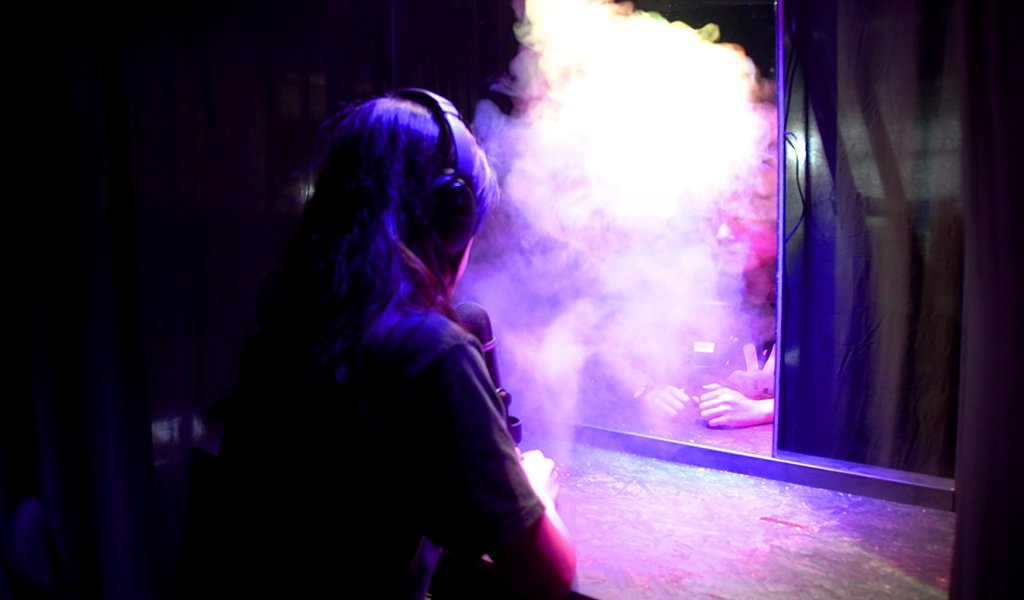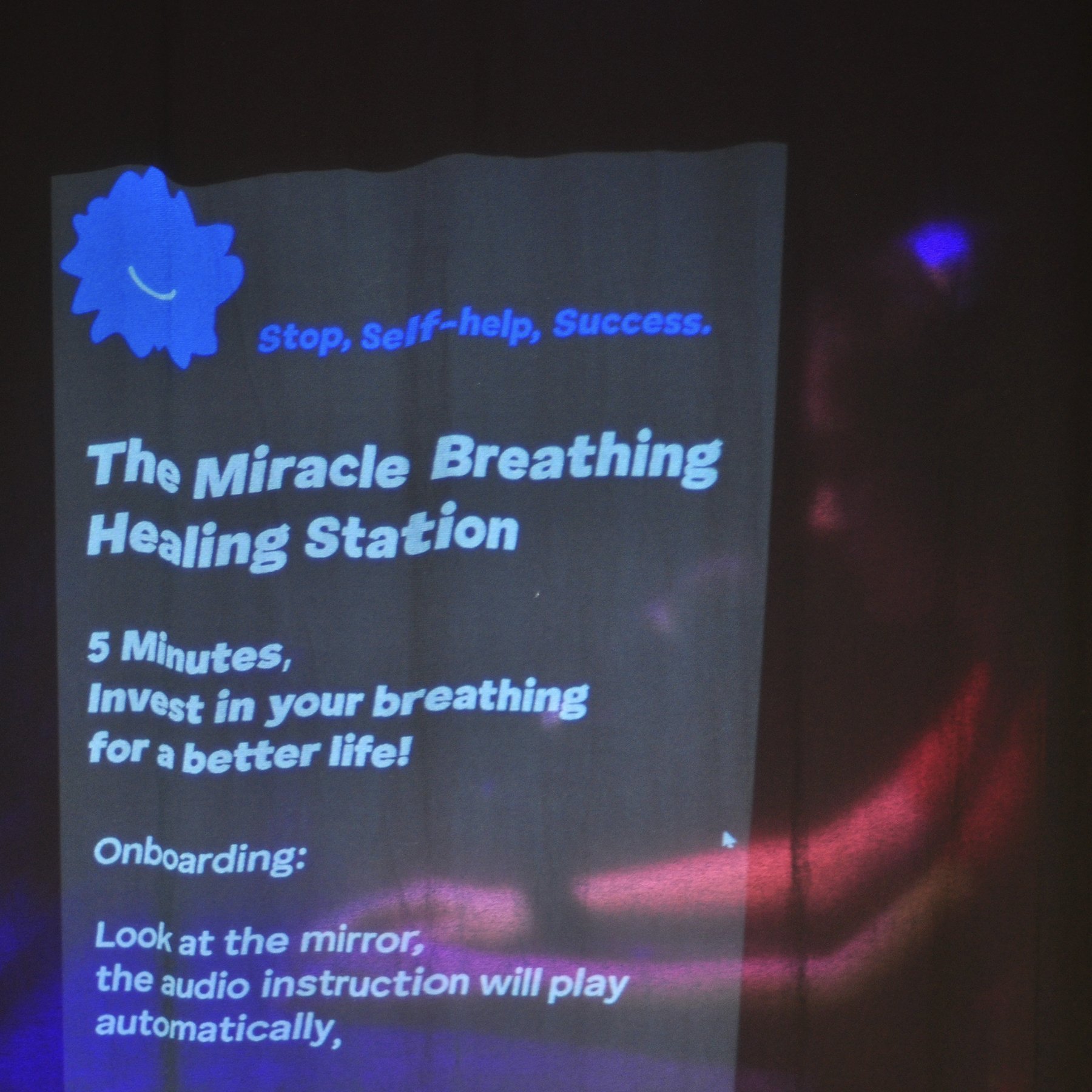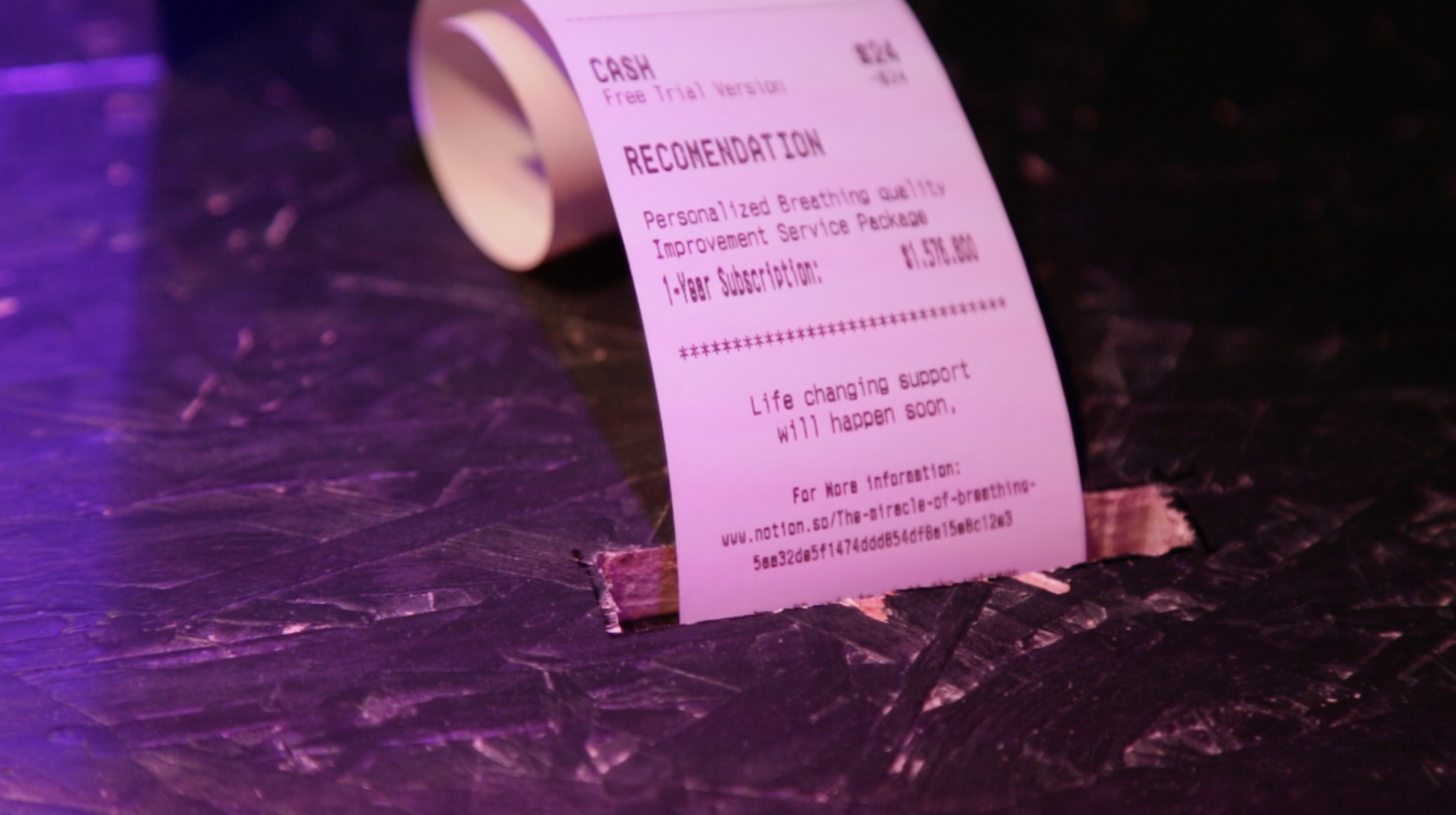
‘The Miracle of Breathing’ by Yiru Lu
Master Program of Interactive Media Art (2019-2021)
New York University, USA
Key supervisors: Despina Papadopoulos, Andrew Lazarow, Craig Protzel
Do you know how to breathe properly? Are you breathing freely? THE MIRACLE OF BREATHING is a speculative vending machine that sells mindfulness and breathing techniques as commodified goods.
It is an interactive installation with human physiological breath behavior. The installation is 2-meters tall and 1.2-meters wide, covered by semi-light proof material, disguising as a self-service meditation booth.
Participants are invited to complete a four-minute breathing exercise guided by audio while staring into a mirror. This fictional customer service experience explores how commercial meditation creates desire, peddles individualistic values of success, and accelerates the alienation of labor.
CONTEXT/RESEARCH
When I was exploring a quick solution to relieve my anxiety caused by the graduation project, I noticed that many people around me are paying for meditation, such as breath tutoring, both at work and in their personal lives. A question comes to mind: why do we need to learn how to breathe and pay for it in modern society? This is the starting point of my thesis project.
There are three main phases of my research.
Phase1: Understanding what motivates people to learn to breathe.
I invited seven respondents who are practicing meditation into an online 1-on-1 interview. The main goals for them are:
• to find a quick fix to the emotional problems that come from their work.
• to improve brain performance, as advertised on social media
• to seek online services for treating depression easily.
For them, breathing meditation can temporarily alleviate emotional problems. However, it doesn't work as advertised in the face of significant emotional stress or practicing in short courses. One of the respondents spent $500 for a 21-day online breathing course, but nothing changed as promised.
Phase2: Understanding how mindfulness meditation markets make money?
• With the support and advocacy of research institutions and entrepreneurs, the benefits of mindful meditation have widely spread through social media, business magazines, and books. The leading mass market, the United States, is convinced by this idea that mindfulness and meditation work pretty well for personal life success. This is so attractive that people believe Mindfulness Meditation could achieve their needs and expectations by purchasing meditation services.
People start to believe in the positive relationship between Mindful mindfulness and personal success and corporate well-being. In the United States, the market reached $1.21 billion in 2017 and is expected to reach $2.08 billion in 2022. (The Data Source:Data Bridge)
Ironically, although companies provide meditation courses or even places for employees to do self-help meditation, if we look at companies such as Amazon, we see the meditation they offer workers, the AmaZen booth, is just a cover-up for their more fundamental problem-the high-intensity work and long working hours. Further, instead of going to the restroom, employees have to use water bottles to relieve themselves because of the time limitation.
Phase 3: Can commercial meditation really solve the problem?
I found three keywords for criticizing the whole market based on the academic research:
• McMindfulness
McMindfulness(named by Ronald E. Purser) is the marketing of mindfulness practice as a commodity sold like any other commodity in our brand culture.
This terminology and idea satires the commercialized mindfulness tailored to meet consumer demands, and marketing strategists cherry-pick science to improve its marketability. This commodity mindfulness is abused in the commercial world and even in the military, trained to reduce the emotional responses of soldiers.
• Neoliberalism, individualism success and happiness
The main features of commercialized meditation, such as Quantifiable capabilities (evaluation of the practice), Outcome predictability (better brain performance), and Automated self-help treatment, caters to the Neoliberal idea of encouraging individual success and self-management. It serves as a hypocritical tool for corporations to better exploit their employees in neoliberal societies and conceals Capitalism’s systematic problems that underlie our stress and anxiety and lets go of the idea that we can change the world.
• Spiritual materialism
This commodity service encourages individuals to join the practice on their own with the online service, to get away from public engagement, the real systematic problem, and hidden into a personal comfort zone to escape from a stressful life as spiritual materialism advocates the belief that a certain temporary state of mind is a refuge from suffering.
The investigation reinforced my critique. The commodified fast fix treatment caters to the Neoliberalism idea of encouraging individual success and self-management. It lets go of the idea that we can change the world.
USER JOURNEY
Fully automatic experience: As the participant enters the booth and picks up the headset, audio breathing instructions start to play. The 4-minutes instruction teaches participants how to breathe, understand the mystery of breath correctly by the tone of black comedy storytelling. The mist responds to the participant's breathing. After the participant finishes breathing practice, a personalized breathing evaluation receipt is printed.
Yiru Lu / MA Interactive Media Art / NYU / 2019-2021
Yiru is a Chinese artist, Senior space and experience strategic designer, trends researcher. Focus on technology, art, and the experience about future interactions. Before join in the Program of Interactive Media Art, Yiru participated as an architect in different projects, ranging from commerce to culture, healthcare interior and public facilities.
Speculative design, Interactive, Installation, Immersive, Art







